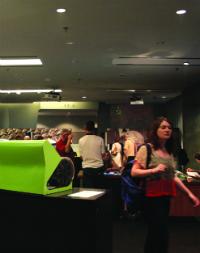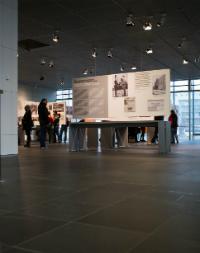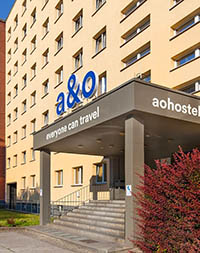Christmas Markets For School Groups In Berlin, Germany
Berlin is the capital city of the German Christmas Markets. Whether you prefer a contemplative and magical Christmas Market or a lively and urban one, Berlin offers you a choice of sixty Christmas Markets to choose from.
Highlights
A choice of sixty Christmas Markets
Wall art at the East Side Gallery
Escape attempts at Checkpoint Charlie Museum
Warhol and Beuys at Hamburger Bahnhof
Cramlington Learning VillageGreat itinerary and we packed such a lot in. We feel like they got a lot for their money and it was an excellent educational experience.
What's included*
*Please note, entrance fees where applicable are not included in typical price – contact us for more details
Recommended excursions
Berlin is the capital city of the German Christmas Markets. Whether you prefer a contemplative and magical Christmas Market or a lively and urban one, Berlin offers you a choice of sixty Christmas Markets. Scattered throughout the city they all offer something unique, selling Christmas gift items along the large boulevards and squares, on the small side streets and even in several museums.
Explore Berlin’s rich culture and history on foot by taking a walking tour. The must see sights are the Brandenburg Gate (a former city gate, rebuilt in the late 18th century as a neoclassical triumphal arch), the Reichstag, Memorial to the murdered Jews of Europe and Unter den Linden – the most well-known and grandest street in Berlin.
Lively, interactive and thrilling–the DDR Museum presents the history of the German Democratic Republic in all of its multiple facets. Visitors are taken on a journey through time into the East German socialist past. As one of the most interactive museums in the world touching and trying out the exhibits is explicitly allowed. Guided tours and a talk with a contemporary witness are available. Fact: The DDR Museum holds the largest museum collection of original GDR objects worldwide.
This 368-metre tower dominates the city skyline and is the tallest building in Germany. The Tower was built in the 1960s by the East German Government not least to demonstrate the strength and efficiency of the socialist party system. The observation deck at 203 metres includes Berlin’s highest bar and there is a revolving restaurant at a height of 207 metres. Combine your visit with Berlin Odyssey, a virtual reality time travel experience through 9 centuries of Berlin history, available at 203 metres.
Two millennia of Jewish history and culture in Germany are on display in the iconic zig-zag shaped building by architect Daniel Libeskind. Students can explore how the symbolic architecture retells German Jewish history. The historical exhibition route is punctuated with diverse and interactive thematic spaces that expand perspectives on the diversity of Jewish life up to the present day.
Checkpoint Charlie, the most well-known of the border crossings between East and West, is now one of Berlin’s most popular tourist attractions. At the Checkpoint Charlie Museum unique artefacts including many of the contraptions used by those who tried to cross illegally, and works inspired by the division, will vividly bring the past to life for your students.
East Berliners breached the Wall on 9 November 1989, and between February and June of 1990, 118 artists created unique works of art on its longest-remaining section. This open-air gallery serves as a memorial for freedom. One of the best-known works, by Russian artist Dmitri Vrubel, depicts Brezhnev and Honnecker (the former East German leader) kissing.
This former railway station serves as the Museum für Gegenwart(Museum for the Present), part of the Berlin National Gallery. It was set up after entrepreneur Erich Marx offered his private art collection to the city. The focus is on contemporary art of the 20th Century including works by Andy Warhol, Cy Twombly, Roy Lichtenstein and Joseph Beuys.
©️Maximilian Meisse
This outdoor museum and information centre is on the site of the former headquarters of the Gestapo and the SS. By finding out about the destructive effects of Nazi state terror, students gain a humanising insight into the history of totalitarianism in Germany, and its implications for the world today. They learn important lessons not only for exams, but also for their broader development.
A guide will tell your group all about the German architectural and sports history of the Olympiastadion, built for the 1936 Summer Olympics, and Olympiapark. Enjoy the view from the top of the Glockenturn bell tower and browse the exhibition at the Langemarckhall. Fact: The Olympiastadion has been the ground of club Hertha BSC since 1963.
Experience Germany’s fascinating capital with an exciting quest. Students are encouraged to work in teams to collect keys and be in with a chance of unlocking the winning box. Berlin comes alive through a mix of treasure hunt-style clue solving and challenges with visits to historical sites including The Brandenburg Gate, Gendarmenmarkt, and The Holocaust Memorial. Enrichment or MFL version available.











Typical accommodation

Why groups like it:
Facilities

Why groups like it:
Facilities
Learning outcomes
Subject focus
Students can:
- Take language practice beyond the classroom, engaging in spontaneous, unscripted conversations with native speakers
- Develop students’ confidence and fluency in a foreign language by speaking it in practical situations
- Experience another culture
- Develop students’ interest and enthusiasm for another country and its language
- Discover, explore and have fun with fellow students and teachers
Student outcomes
Students will have had an opportunity to:
- Develop speaking and listening skills through talking to native speakers in everyday situations
- Gain confidence by stretching their vocabulary
- Learn about German culture and the German people
- Strengthen existing friendships and make new friends



